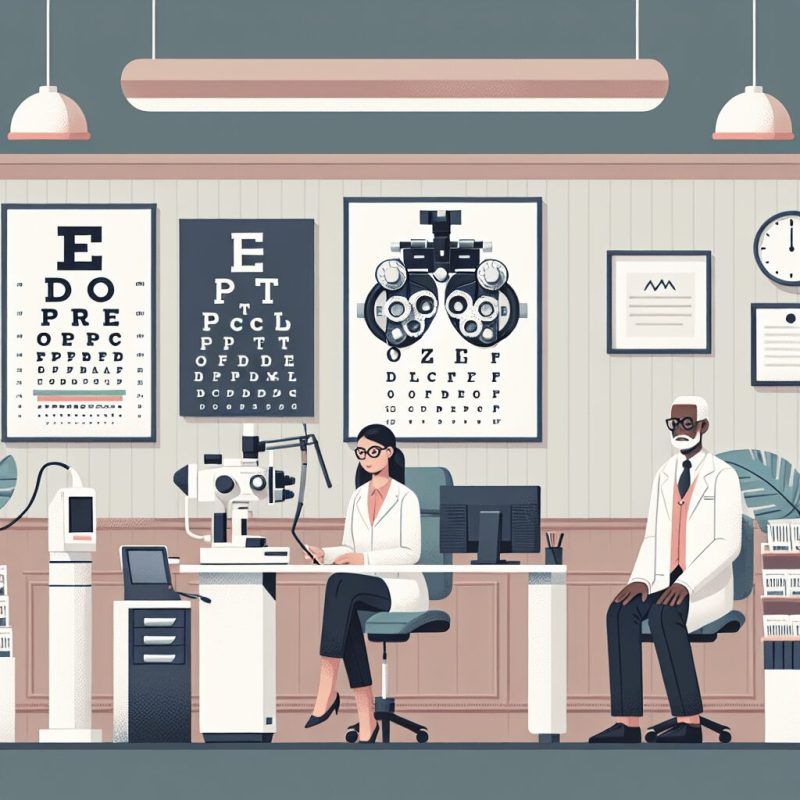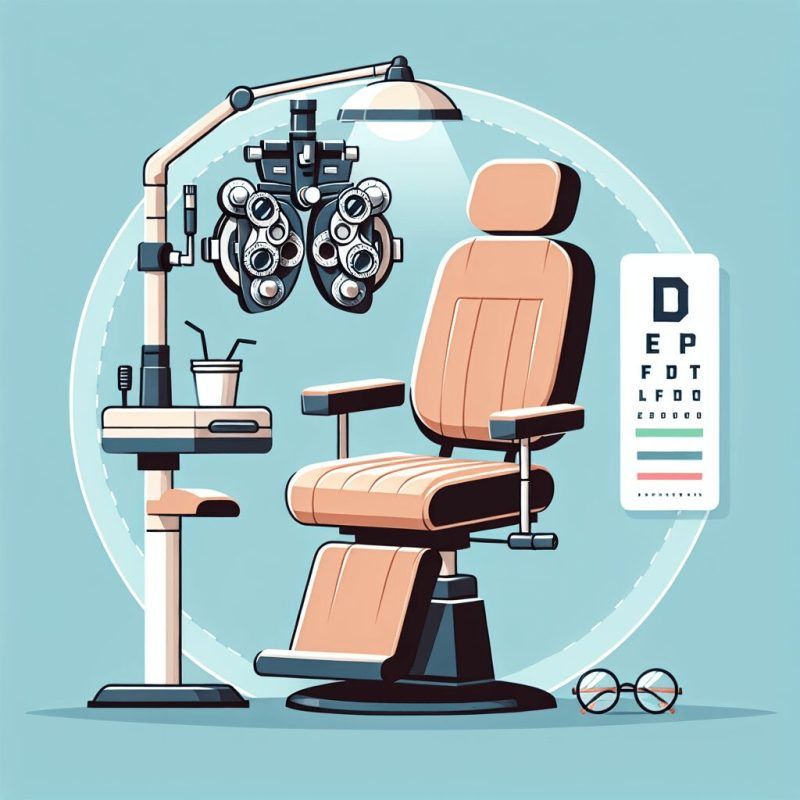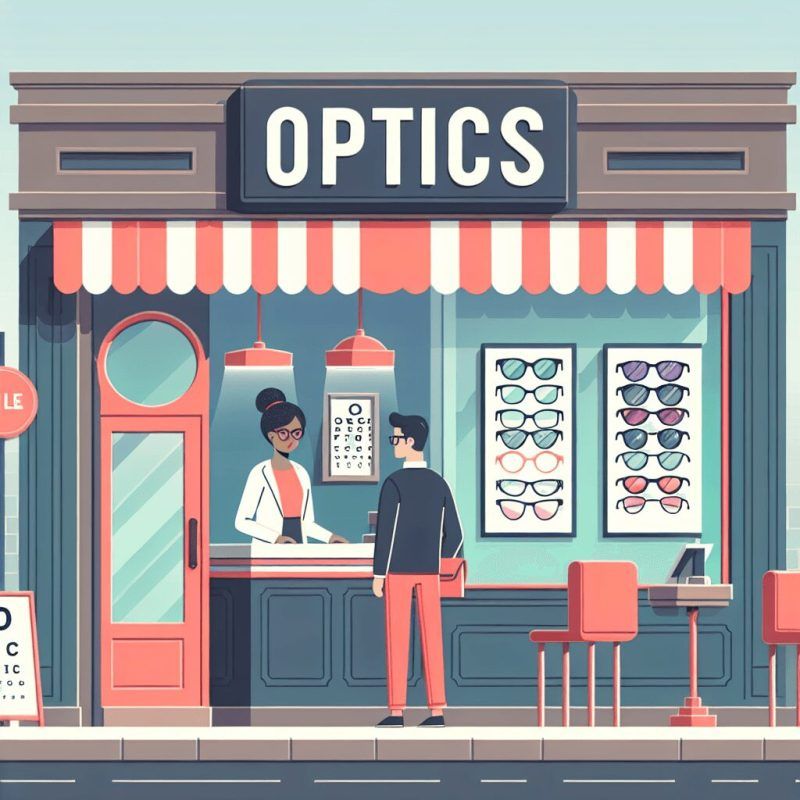Doctor's Corner
What’s Considered a Normal Eye Prescription?
When you visit your eye doctor and get your eye prescription, it might seem like solving a puzzle. The mix of abbreviations, numbers, and symbols can be confusing. But don’t worry, we’re here to help you understand. We’ll explain terms like OD, OS, SPH, CYL, AXIS, and others, so you can decode a standard eye prescription. You’ll soon uncover the secrets of your eye health measurements.
Understanding Eye Prescriptions
What is a normal eye prescription?
An eye prescription can range from -5 to +3 diopters based on individual vision needs. Factors like age, genetics, and health can influence this. It’s essential to check for changes yearly, especially for adults over 40 or individuals with health conditions affecting their eyes. Regular eye exams with an optometrist are vital for monitoring prescription changes and correcting nearsightedness, farsightedness, astigmatism, or presbyopia accurately.
These exams detect issues early and offer effective treatment options to maintain clear vision.
Reading an Eye Prescription
Eye prescription s are usually in a table format. They use abbreviations like O.D. for the right eye and O.S. for the left eye. The numbers and symbols show key details about the correction needed for nearsightedness or farsightedness. For instance, positive numbers mean farsightedness, while negative numbers mean nearsightedness, measured in diopters.
Terms like SPH (sphere) show the overall correction needed. CYL (cylinder) and axis are important for correcting astigmatism. Knowing the values for prism correction and pupillary distance is crucial for the right fit and vision correction with glasses or contact lenses. Consider all these measurements and terms in the context of your eye health and vision needs when reading an eye prescription.
On the prescription, OS means “oculus sinister” for the left eye, while OD means “oculus dexter” for the right eye. Understanding these abbreviations is key to know which eye each measurement is for. The numbers with these abbreviations show the specific correction needed for each eye, whether for nearsightedness or farsightedness.
Terms like SPH (sphere) indicate the overall lens power needed. CYL and axis values are crucial for addressing astigmatism. Paying attention to these details helps in choosing the right lenses for accurate vision correction with glasses or contacts.
Interpreting the Numbers
The numbers in an eye prescription tell about a person’s vision. Negative numbers mean nearsightedness. This makes things up close clear but faraway things blurry.
Positive numbers show farsightedness. This makes close-up tasks hard. Knowing these numbers is important. It helps choose the right lenses to fix vision problems , be it nearsightedness or farsightedness.
Measurements like sphere (SPH), cylinder (CYL), and axis are key. They help deal with conditions like astigmatism.
If the prescription includes an addition (ADD), it means needing more magnification for close-up vision. This becomes more important with age and presbyopia.
The prescription might also mention prism correction for double vision. This needs accurate adjustments to align the lenses perfectly for clear vision.
Regular eye check-ups are vital with an optometrist. They help track vision changes and update prescriptions to keep eyes healthy and vision clear at all life stages.
Tips for Maintaining Eye Health
Avoiding Dangers of Rubbing Itchy Eyes
Eye prescriptions are important for maintaining good vision. It’s crucial to understand the numbers and abbreviations on your prescription to get the right lenses for nearsightedness, farsightedness, or astigmatism.
The SPH and CYL columns show the lens strength needed, while the axis measurement is for the correction’s orientation. The ADD section may indicate extra magnification for presbyopia. Prism correction helps with double vision, with details on direction and strength.
Regular eye exams are vital to track vision changes and update prescriptions. Contact lens prescriptions differ slightly from glasses to ensure a proper fit and avoid discomfort. Optometrists provide accurate measurements and personalized prescriptions.
Preventing Eye Infections like Pink Eye
To prevent eye infections like pink eye, individuals can follow certain habits and practices.
Maintaining good eye health is important. Keep contact lenses clean, avoid eye rubbing, and wash hands frequently to reduce infection risks.
Getting regular eye exams and following prescribed lenses can prevent eye issues. Understand numbers in eye prescriptions like diopters, sphere, cylinder, and axis for the right correction.
Incorporate prism correction for double vision and an “add” measurement for presbyopia to address specific visual needs.
Consulting with an eye doctor for a comprehensive exam and prescription renewal is essential as one ages.
Having the correct prescription and following optometrist recommendations is crucial for preventing infections and maintaining eye health.
Understanding the Risks of Lazy Eye
Understanding the risks of lazy eye is important for maintaining good vision. Lazy eye, also called amblyopia, can cause vision problems if not treated. It mostly affects children and can affect how well they see depth and objects. Not getting early treatment for lazy eye can lead to permanent vision loss in that eye. This shows why it’s important to see an optometrist or eye doctor as soon as possible if lazy eye is suspected.
The vision changes from lazy eye can be mild or severe based on howserious it is. Wearing eyeglasses, lenses, or sometimes prism correction can help improve vision and prevent future problems. Having regular eye check-ups is crucial to catch any vision changes early and get them treated.
Common Eye Conditions and Treatments
Geographic Atrophy: Symptoms and Management
Geographic Atrophy, a type of age-related macular degeneration, can be identified during a thorough eye exam by an optometrist.
Symptoms of Geographic Atrophy involve blurry vision, loss of central vision, and distortion in straight lines.
Diagnosis includes examining the retina for large atrophy areas.
Managing Geographic Atrophy focuses on monitoring disease progression and slowing it down. Treatment options encompass using low vision aids, making lifestyle changes to reduce progression, and taking nutritional supplements.
Regular eye exams are essential for those with Geographic Atrophy to adjust their eyeglass prescription promptly.
In severe cases, prism correction may be needed for double vision.
Leading a healthy lifestyle, such as having a balanced diet and routine eye check-ups, can assist individuals in effectively handling the condition and maintaining their vision.
Color Blindness: Options like Color Blind Glasses
Color blind glasses are available for people with color vision deficiency. These glasses filter certain light wavelengths to improve color perception. Factors to consider when choosing them include the type and severity of color blindness, individual needs, and the effectiveness of the lenses. Consulting an optometrist for the right prescription is crucial. These glasses provide a practical solution and enhance vision quality for those with color vision deficiencies.
Exploring the Use of Prism in Eye Prescriptions
Some eye conditions that may require the use of prism in eye prescriptions include astigmatism and double vision.
Astigmatism is a common condition where the eyes are not perfectly spherical, leading to blurred vision. Prism correction can help align the visual images seen by each eye, reducing eye strain and improving overall vision.
Double vision, also known as diplopia, occurs when the eyes do not align properly, resulting in two images of a single object. Prism in eye prescriptions can help shift the image, allowing the eyes to work together more effectively.
By incorporating prism correction, optometrists can tailor vision correction to address specific eye alignment issues and provide a more accurate prescription for individuals with these conditions.
Eyeglasses and Contact Lenses
Understanding Expiration Dates for Eyeglass Prescriptions
Expiration dates on eyeglass prescriptions are important. They show how long the prescription is valid. It’s crucial for individuals to get their eyes checked regularly. This ensures they have the most accurate vision correction. Understanding expiration dates helps maintain good eye health. It also ensures the right prescription for choosing between glasses and contacts.
Regular eye exams are recommended by eye doctors. They help detect any changes in vision. Adjustments in prescriptions can address issues like nearsightedness, farsightedness, and astigmatism. A current prescription is essential for getting the right lenses. This is crucial for optimal vision correction. Factors like pupillary distance, prism correction, and cylinder and axis measurements are considered.
Staying informed about expiration dates and having up-to-date eye exams are key. They play a role in overall eye health. They also impact treatment options. These considerations include presbyopia and using both glasses and contacts.
Choosing Between Eyeglasses and Contact Lenses
When deciding between eyeglasses and contact lenses, it’s important to consider factors like your prescription, comfort preferences, and lifestyle needs.
-
Those with high astigmatism or complex prescriptions might find it harder to fit contact lenses properly than eyeglasses.
-
People involved in sports or outdoor activities may prefer contacts for better peripheral vision and no glasses fogging up.
-
On the other hand, individuals with dry eyes or who like low-maintenance options could choose eyeglasses.
Consulting an optometrist is key to finding the best choice for you. Both eyeglasses and contact lenses have pros and cons depending on your lifestyle and activities.
FAQ
What is considered a normal eye prescription?
A normal eye prescription is typically between -1.00 to +1.00 in both eyes. For example, -0.75 in the right eye and +0.50 in the left eye would be considered a normal prescription.
How do I know if my eye prescription is within the normal range?
Consult with an eye care professional to determine if your eye prescription is within the normal range. They will assess your vision using tests like visual acuity, refraction, and eye health evaluations to determine if any corrective measures are needed.
What are the typical measurements for a normal eye prescription?
The typical measurements for a normal eye prescription are usually given in diopters. For example, a nearsighted person may have a prescription of -2.00 diopters, while a farsighted person may have a prescription of +1.50 diopters.
Can my eye prescription change over time?
Yes, your eye prescription can change over time. Factors such as age, health conditions, and lifestyle habits can lead to changes in your vision that may require an updated prescription. It is recommended to have your eyes checked regularly by an eye care professional.
Is it common for people to have slight variations in their eye prescription?
Yes, it is common for people to have slight variations in their eye prescription. Factors such as age, health changes, and eye strain can affect one’s prescription over time. It is recommended to have regular eye check-ups to monitor any changes.
Discover the significance of a “normal” eye prescription and how it caters to your vision requirements. Book an appointment at Superior Eye Care in The Woodlands or Quality Eye Care in Willowbrook, Texas, for tailored recommendations to guarantee that your prescription effectively enhances your vision.
The post What’s Considered a Normal Eye Prescription? first appeared on Optometrist in Woodlands & Willowbrook TX.
Doctor's Corner





